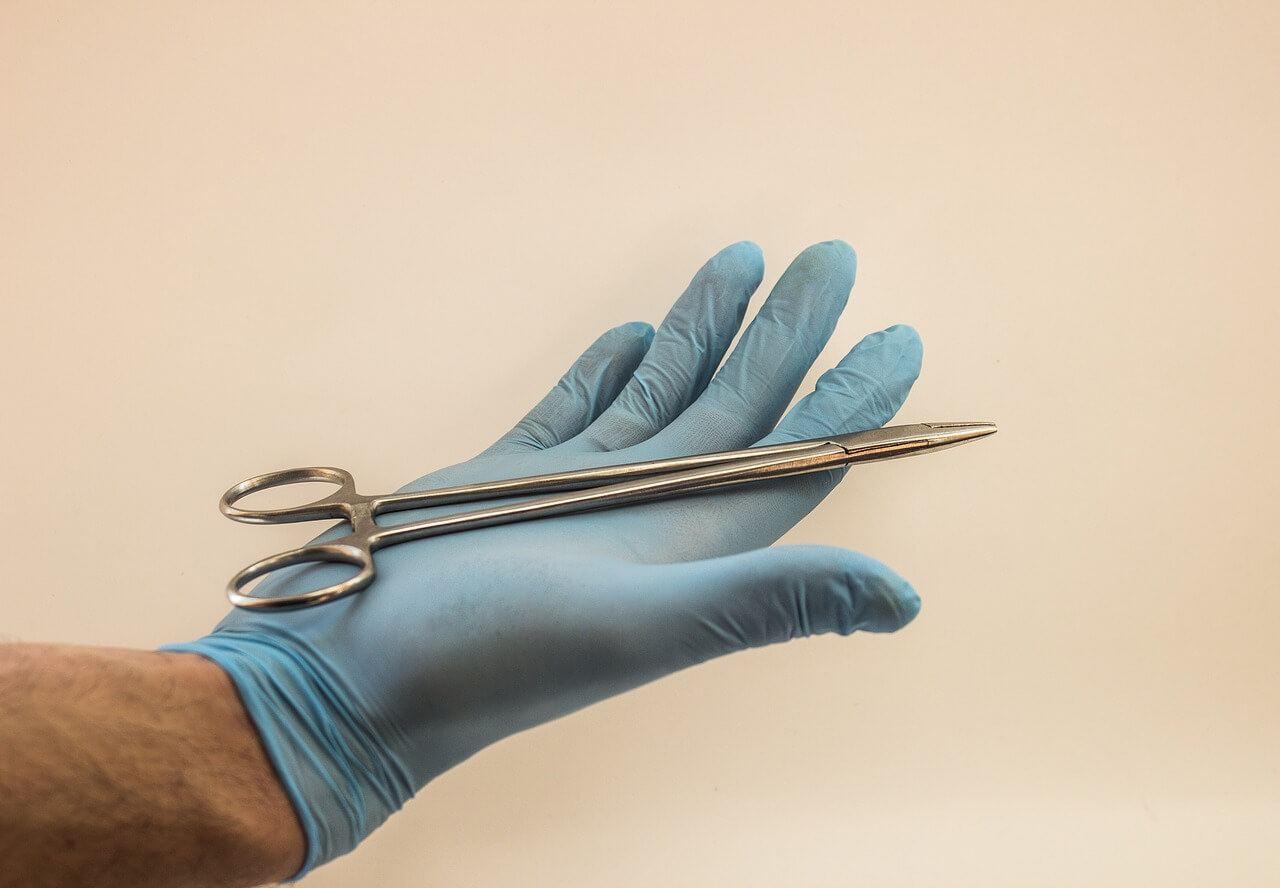Single-use medical gloves are designed to protect the person wearing them and prevent the transmission of pathogens and biological contaminants between patients. The protective properties of gloves are maintained, provided that the effectiveness of following the correct usage guidelines is upheld. What factors can affect the deterioration of the properties of single-use medical and protective gloves, and what mistakes should be avoided?

What does the protection provided by gloves depend on?
Rękawice medyczne są podstawowym narzędziem profilaktycznym stosowanym w praktyce szpitalnej. Chronią dłonie przed przypadkowym zabrudzeniem materiałem biologicznym i zapobiegają jego przenoszeniu. Za właściwości ochronne rękawiczek odpowiada przede wszystkim materiał, z którego zostały wykonane. W powszechnym użyciu są nitrile gloves (z gumy syntetycznej) oraz lateksowe and winylowe.
Microorganism permeation
Rękawice muszą stanowić barierę dla mikroorganizmów. Europejska norma EN 455–1 określa, że każda seria rękawiczek musi być pod tym względem kontrolowana i uzyskać odpowiedni poziom AQL, podczas testu wodnego. Dla rękawic medycznych wynosi on maksymalnie 1,5 – im niższy poziom, tym rękawica jest bardziej szczelna. Obecnie wiele rękawic, zwłaszcza nitrylowe posiada obniżony poziom AQL wynoszący 1,0. Poziom AQL (szczelności) jest kontrolowana obowiązkowo, dla każdej partii produkcyjnej wykonuje się wyrywkowe test wodny wykrywający ilość dziurawych rękawic.
Another standard testing procedure is the assessment of the material’s resistance to viruses and bloodborne pathogens using the bacteriophage Phi‑X 174. It has an extremely small diameter (27 nm). For comparison, the HIV virus is approximately 100–150 nm, the HBV virus is 42–47 nm, and the HCV virus is 30–38 nm. Therefore, if the bacteriophage Phi‑X 174 cannot penetrate the gloves, larger viruses will also be unable to do so.
Other requirements and tests related to the barrier properties or protective properties of gloves are specified in standards EN 455–1‑2–3‑4, as well as EN 374–2‑3. You can find a list of standards for gloves and an explanation of labelling here.
Resistance to damage
The protective properties of gloves against the ingress of pathogens are maintained as long as there are no micro-damages to the glove, which can occur, for example, during needle puncture and material intrusion. However, this is a situation that is obvious enough that the moment of intrusion is easily noticeable.
Less obvious are situations in which the deterioration of the properties of medical gloves occurs during improper donning or removal of gloves, incorrect usage, or storage. In such cases, the glove’s surface may be compromised, leading to the formation of invisible micro-damages that could potentially become points of infection.
To minimize the risk of such damage that can reduce protection, gloves are manufactured to be both flexible and resistant to stretching. In this regard, both latex and nitrile gloves perform very well and provide excellent protection against both the penetration of pathogens and the formation of micro-damages.
Resistance to chemicals
The protective properties of gloves can also be reduced through chemical substances with which medical personnel come into contact. Certain oils, fats, ozone or other chemical agents can weaken the structure of latex or synthetic rubber, increasing the risk of tearing. In such situations, vinyl gloves may be a better choice. Although they are less flexible and more prone to tearing, they provide better protection in conditions where there is a likelihood of contact with the aforementioned substances. You can read more about the differences between the materials used for gloves here.
The aging processes of gloves
The aging processes of medical gloves can impact their protective properties. It has a real effect on the barrier properties of the material and its stiffness. Over time, the material becomes more susceptible to tears and micro-damage. Therefore, medical gloves should not be used beyond their expiration date, and they should be stored in appropriate conditions to prevent accelerated aging of the material.
What affects protection? Non-compliance with the rules
Gloves provide excellent protection for the user; however, one must not forget to adhere to hand hygiene practices and the correct way of donning and doffing gloves. It is during the removal of gloves soiled with bodily fluids that pathogens are often inadvertently transferred to the skin. Therefore, it is crucial to thoroughly wash or disinfect hands after glove removal, which plays a role in protection against healthcare-associated infections. Knowledge of hand hygiene, is necessary to ensure that no unwashed areas are left on the skin and under the nails.
Bibliography:
1. Katarzyna Majda, Sławomir Gondek, Zmniejszenie ilości zakażeń szpitalnych poprzez odpowiedni dobór rękawic, Skamex Sp. z o.o. Sp.k.
2. Sylwia Łagan, Magdalena Markiewicz, „Ocena wybranych właściwości fizykochemicznych rękawiczek diagnostycznych”, Aktualne Problemy Biomechaniki, nr 14/2017, s. 29–36;
3. Sławomir Gondek, „Porównanie cienkich rękawic diagnostyczno-ochronnych lateksowych i nitrylowych w kontekście poziomu ochrony przed Covid-19 oraz innymi zagrożeniami.”, skamex.com.pl
4. Kinga Przygoda, Rękwice medyczne – skuteczna bariera ochronna zespołu operacyjnego – MercatorMedical Protecting (30.11.2015);
5. Centralny Instytut Ochrony Pracy – Państwowy Instytut Badawczy, „Rękawice chroniące przed czynnikami biologicznymi”, ciop.pl
 Polski
Polski